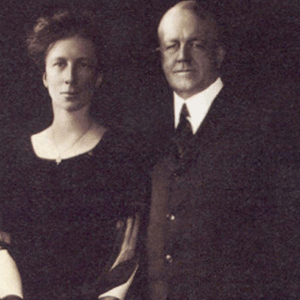 Together The Gilbreths formed one of the great husband-and-wife teams of science and engineering. In the early 1900s, they started work on the development of motion study as a performance improvement technique. Frank, who started his working life as a bricklayer, had noticed that no two bricklayers seemed to use the same method – each developed his own individual technique. This led him to question the concept of ‘the one best way’ and to work on ways of improving how work was carried out. He developed a number of improvements for bricklaying – making sure , for example, that lower graded workers were used to stack bricks in precisely the best way for a skilled bricklayer to pick them up with out looking or thinking.
Together The Gilbreths formed one of the great husband-and-wife teams of science and engineering. In the early 1900s, they started work on the development of motion study as a performance improvement technique. Frank, who started his working life as a bricklayer, had noticed that no two bricklayers seemed to use the same method – each developed his own individual technique. This led him to question the concept of ‘the one best way’ and to work on ways of improving how work was carried out. He developed a number of improvements for bricklaying – making sure , for example, that lower graded workers were used to stack bricks in precisely the best way for a skilled bricklayer to pick them up with out looking or thinking.
Frank and Lillian analysed work in a number of fields and pioneered the use of moving pictures as the basis of recording and analysis. The developed the concept of fundamental elements of work – which they termed Therbligs (from the reverse of their name) – as a way of analysing work at a high level of detail (micromotion study).
After Frank’s death, Lillian continued the work and extend its ‘reach’ into the home, looking for the ‘one best way’ to perform basic household tasks (a process started by Frank). As a mother of twelve, this was quite important. The Gilbreth household ran by means of the Family Council established by Lillian. This oversaw a purchasing committee and a utility committee which fined wasters of water and electricity.
Lillian was one of the first ‘superwomen’ to combine homemaking with a strong career. In 1926 she became the first woman member of the American Society of Mechanical Engineers and in 1935 became professor of management at Purdue.
Together, they formed a strong team – Frank was more concerned with technical matters relating to worker efficiency; Lillian concentrated on the human issues. She was ahead of the time but much of what she articulated has since been adopted into mode management.
See The Gilbreth Network http://gilbrethnetwork.tripod.com/
